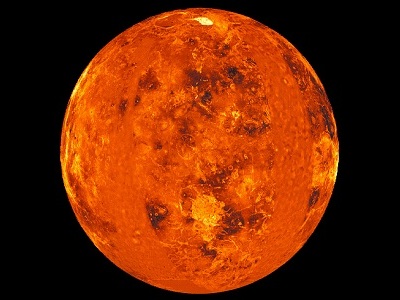Explore Venus

Venus is the second planet from the Sun, and is Earth's neighbor in the solar system. Venus ...
Read more
The atmosphere of Venus is very hot and thick. If you were on the surface of the planet, the ...
Read more
Would you expect to find ice caps and snow fields on Venus? Not likely! Venus is the hottest ...
Read more
All of the relevant information about Venus collected on one page, including details about size, orbit ...
Read more
There are several interesting myths associated with the planet Venus. While Venus was the goddess ...
Read more
A table containing information about the spacecraft that have visited Venus ...
Read more
Access wonderful captioned photos and illustrations that will inspire and excite you. ...
Read more
These are links to other great web sites about Venus. But beware: you don't want to get caught ...
Read more
Did you know?
Did you know that
the
upper atmosphere of the Earth overlaps with the Earth's
ionosphere?
Did you know that the Earth's
magnetic pole in the Northern hemisphere is not aligned with the Earth's geographic
north pole?
Earth and Space Science Concept of the Day
Do you know what this word or phrase means?
Rayleigh wavexRayleigh wave : A Rayleigh wave is a seismic surface wave causing the ground to shake in an elliptical motion, with no transverse, or perpendicular, motion.
Click on the word to find out!
Research Highlights
Marine scientists long believed that a microbe called Trichodesmium, a member of a group called the cyanobacteria, reigned over the ocean's nitrogen budget. New research results reported on-line today...
Read more








